2013 Scott Gambler 10
(discontinued)
| Where To Buy | |||
|---|---|---|---|
Free shipping on orders over $50 (continental U.S. only).
International shipping available. Some exclusions apply. |
|||
Free shipping on orders over $50 (continental U.S. only).
International shipping available. Some exclusions apply. |
|||
Ride report by Brandon Turman // Photos by Ian Hylands and Dave Trumpore
In the Spring of 2012, the radically redesigned Scott Gambler was first leaked online. The bike was to be piloted by Brendan Fairclough and the Scott 11 Team, and it sported an interesting linkage system and an impressively slack 62-degree head angle. Over the course of the race season, the bike went through a few more revisions before being officially released in July 2012. During Whistler's Crankworx Festival, we had the opportunity to ride the beast for a day and a half of rock and berm bashing.

Designed By A Shredder
Ben Walker, the bike's Product Manager, joined us for the fun. To some degree, we like to think that a bike's ride qualities are reflected by the designer's ability on a bike. They are the ones testing and refining the bike, after all. Well, within just a few runs it was clear that Ben is very talented on a bike. He hadn't ever been to Whistler before, but he was all over our tail as we descended trail after trail. To us, that speaks volumes about the bike he helped design.

In addition to being skilled on a bike, Ben isn't afraid to get his hands dirty, tinker, experiment, or try something new. Curious how different suspension platforms performed in real life, Ben prototyped and tested a wide variety of designs and linkages on trails he himself had built, replacing suspension theory with real life experience. This gave him a firm understanding of each platform and a reference about how various design inputs affect the ride on the trail.
After settling on a base design and the "Floating Link" suspension design, he and Scott began playing with the main pivot height and suspension curves. Pivot height was a major consideration due to the impact it has on square edge bump absorption — something common to Ben's steep, rooty trails. Scott assembled several prototypes with varying pivot heights, and the end result was a bike with a pivot substantially higher than the previous Gambler. Among other changes, this gave the bike a much more race-focused feel.

Gambler 10 Highlights
Take a moment to hear about the bike from Ben and Fairclough in this Scott promo video:
- Frame Material: 6061 aluminum
- Travel: 210mm (8.2-inches) via a 10.5-inch eye-to-eye shock (2.36:1 shock ratio)
- Chainstay Length: Adjustable from 425 to 440mm (low bottom bracket) or 421.5 to 436.5mm (high bottom bracket)
- Head Angle: Stock 62-degrees; Adjustable from 60 to 64-degrees with included Syncros cups
- Bottom Bracket Height: Adjustable from 0 to +10mm offset
- IDS-X Dropouts - Eccentric 12x150mm axle bolt with a conical head that keys into the frame
- Frame Weight: 8.6 pounds without shock
- Fork: Fox 40 RC2, 20mm thru axle
- Shock: Fox DHX RC2 Coil
- Stock Build Weight: 39.2 pounds
- MSRP: $5999.99

On The Trail
Prior to hopping on the lift, we set the bike up in the stock configuration with a low BB, 62-degree head angle, and 425mm chainstay length.
For our maiden voyage, we pointed the Gambler straight down Schleyer to lower Canadian Open, a combo littered with everything from decent sized drops to steep bits, rocky sections, a roughed-in new portion and the occasional jump or two. It was immediately apparent that this bike performs amazingly well in the rough stuff. Just above the chairlift, there's a section on Schleyer where you drop off of rock slab into a short rock garden. We had ridden this section on four other bikes in the preceding days, and to our surprise, the Gambler barely slowed down through the rocks. Lower down, on a freshly cut steep portion of the Canadian Open course, our initial impression was reaffirmed. This bike hauls ass though the gnar, especially when it's steep. Combined with the super slack 62-degree front end (the slackest we've ever ridden), the bike took the harshness off nearly every square hit, seemingly gaining speed where other bikes struggle. Handling through the rough was superb at speed, and changing directions or switching lines seemed almost effortless.
Anyone who has dropped into Upper Whistler DH has likely been afraid for their wheels. Just a few turns in, there are a few of the harshest bumps on the mountain. Most bikes get hung up in this section, nearly pitching riders off their bikes, but not the Gambler. The bike's relative smoothness over these hits was very impressive. This can be mostly attributed to the relatively high-pivot placement. One of the most common issues with high-pivoted bikes is pedal kickback, where the pedals will ratchet backwards when the suspension is compressed. Following our day and half on the bike using flat pedals, we can confidently say that it's a non-issue.

The bike's performance continued to impress us on other parts of the mountain. Dropping off the huge rock face into the massive dirt holes between Lower Whistler DH and Lower Joyride is one of the scarier moves on the lower mountain, but the Gambler ate it up. The bike's ability to handle well in the rough was very appreciated following several days in the park. Confidence inspiring? You bet.
Further up the hill, on the high speed wide open grass turns at the base of Black Velvet, we were pleased to find that the slack front end didn't push in corners. The bike's excellent small bump performance, low bottom bracket, and rearward axle path kept the rear end planted in these turns, providing ample traction and eliminating unintentional skipping. The bike's suspension curve is linear for the first 50% and progressive through the last 50%, allowing good small bump compliance at the sag point and increased support when the trail calls for it. Ben mentioned that there is a substantial difference in ride characteristics depending on rear spring rates, so spend some time playing around with 25 pound increments to find your sweet spot.
Later in the day, on another run down Schleyer, we carried too much speed over an uphill root section into a rather large step down. Overshooting the step down and landing nearly flat, we entered a turn near the bike's limit. Luckily it has an almost bottomless feel to it and proved to be stable and controllable deep into the travel. The bike can be lengthened using the adjustable dropouts for even more stability in similar situations.

In the stock configuration, the bike's faults became readily apparent on tighter, jumpier trails. The 62-degree head angle proved to be slow in the tight berms leading up to Fade to Black, and the bike exhibited much less pop than most bikes on A-Line. While the bike's performance could likely be improved in these situations, we didn't have time to swap headset cups, nor did we want to. We were having too much fun in the rough.
At just over 39 pounds, the bike is a comfortable weight, which likely adds to the overall stability. It rides like a heavier bike though, likely because of the rearward axle path. Sprinting from a dead stop seemed sluggish, and at slow speeds it required a fair amount of effort to move around.

Component wise, it might be puzzling why Scott didn't spec top tier parts across the board. The bike uses Shimano Zee brakes and a Fox DHX RC2 rear shock, for example. After a few days of use, we think these were calculated moves to save dollars while maintaining a very comparable level of performance. The well thought out component spec is more than capable for top-tier DH use.
What's The Bottom Line?
At a time when several companies are releasing bikes upwards of $9,000, Scott has developed a very race-capable machine for two thirds the cost. Out of the box, we see the Gambler as the ideal ride for high speed, steep, and rough courses, while also possessing the capability to perform well in other scenarios after a few geometry tweaks. The bike's handling characteristics are inspiring and comfortable, and we found ourselves carrying more speed into and through sections aboard the Gambler than any other bike we've ridden at Whistler. Gambling on the Gambler is a winning bet.
Visit www.scott-sports.com for more details.
About The Reviewer
Brandon Turman likes to pop off the little bonus lines on the sides of the trail, get aggressive when he's in tune with a bike, and to really mash on the pedals and open it up when pointed downhill. His perfect trail has a good mix of flow, tech, and balls-to-the-wall speed. He loves little transfers, rollers, and the occasional gap that gives him that momentary stomach in your throat kind of feeling. Toss in some rocky bits with the option to double over them or risk pinch flatting and you've got a winner in his book. In 13 years of riding he worked his way through the Collegiate downhill ranks to the Pro level. After finishing up his mechanical engineering degree, his riding focus turned to dirt sculpting and jumping with the occasional slopestyle contest thrown in for fun. Nowadays he's Vital MTB's resident product guy.
Specifications
| Where To Buy | |||
|---|---|---|---|
Free shipping on orders over $50 (continental U.S. only).
International shipping available. Some exclusions apply. |
|||
Free shipping on orders over $50 (continental U.S. only).
International shipping available. Some exclusions apply. |
|||






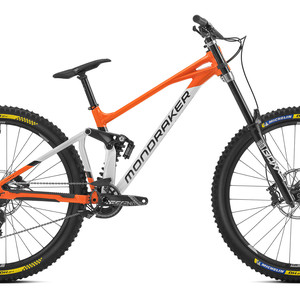
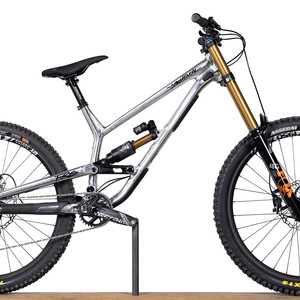
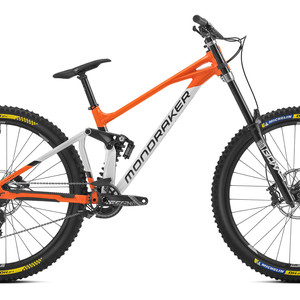


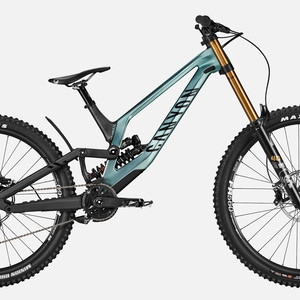

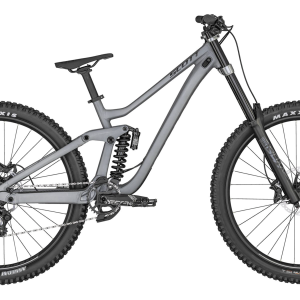






1 comments
Post a reply to: First Ride: Scott's 2013 Gambler - Superb in the Rough